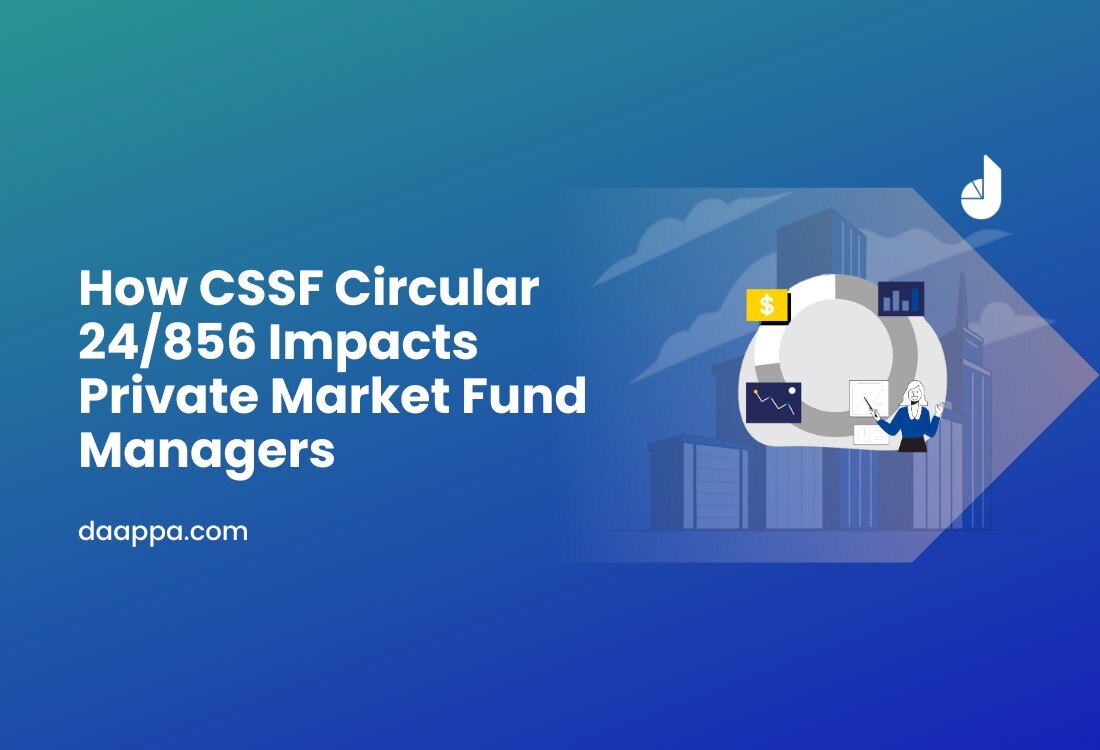How PE Fund Accounting Software Transforms Private Equity Management
In today’s competitive private equity (PE) landscape, precision and performance are inseparable. Fund managers are under mounting pressure to deliver transparency, maintain...
The European Securities and Markets Authority (ESMA) plays a crucial role in shaping the regulatory landscape for private asset management across Europe. With its primary aim to ensure the stability and efficiency of financial markets, ESMA's regulations significantly impact how private asset managers operate, particularly in areas such as compliance requirements and reporting obligations. For asset managers navigating the complexities of private equity, real estate, and other private assets, understanding these regulations is vital.
This article delves into key ESMA regulations, highlighting their impact on private equity fund regulation, operational practices, and the role of private equity reporting software. We'll also explore how asset managers can address these challenges effectively.
ESMA, established in 2011, is responsible for safeguarding the stability of the EU financial system by developing a unified approach to regulation across member states. Its mandate includes the development of technical standards, supervision of credit rating agencies, and fostering transparency within financial markets.For private equity fund regulation, its influence is evident in frameworks like the Alternative Investment Fund Managers Directive (AIFMD) and Markets in Financial Instruments Directive II (MiFID II).
These frameworks demand transparency, investor protection, and risk management, compelling asset managers to adopt advanced private equity reporting software to meet their obligations efficiently.
Under AIFMD, all private asset managers managing AIFs must obtain authorisation from their national regulator and comply with strict rules around governance, risk management, and transparency. ESMA sets the guidelines and supervisory practices for national competent authorities, ensuring a harmonised regulatory approach across the EU.
Asset managers must adhere to requirements regarding capital adequacy, delegation of functions, and reporting. This has led to increased compliance costs for managers, as they must maintain adequate internal controls, appoint depositaries, and demonstrate effective risk management procedures. Smaller managers may find these compliance obligations burdensome, which could limit their ability to scale and expand operations.
The transparency requirements under AIFMD mandate regular reporting to national regulators, with information on investment strategy, asset exposure, leverage, liquidity, and risk concentration. The directive enforces stringent reporting obligations, standardised through ESMA's Annex IV templates.
Adopting sophisticated private equity reporting software becomes critical to manage these demands effectively and ensure accurate, timely submissions. ESMA standardises these requirements through the use of Annex IV reporting templates.These reporting obligations provide a clearer view of private asset activities across Europe, enhancing oversight. However, the operational challenge of managing frequent and detailed reporting requirements can be significant, particularly for firms dealing with diverse asset classes or complex fund structures. To comply, asset managers must invest in data management solutions capable of aggregating and reporting accurate information.
MiFID II (Markets in Financial Instruments Directive II) also impacts private asset management, particularly in the areas of investor protection, transparency, and distribution practices. MiFID II's investor protection rules require asset managers to ensure that their products are suitable for the intended investor base, which is particularly relevant for retail investors gaining exposure to private assets. Compliance with these rules is essential for maintaining alignment with private equity fund regulation and ensuring investor confidence.
Private asset managers must comply with MiFID II's product governance obligations by ensuring that their products are tailored to the needs and objectives of the target market. They need to conduct regular suitability assessments, which can be complex for illiquid private assets that require a long-term investment horizon.To streamline this process and meet regulatory standards, managers increasingly rely on private equity reporting software to aggregate and analyse investor data efficiently.
These obligations mean that private asset managers must have a thorough understanding of their investors and ensure that marketing efforts are accurately aligned with investor risk profiles. For managers targeting retail investors through vehicles such as ELTIFs, these suitability assessments are particularly critical to avoiding mis-selling and maintaining regulatory compliance. Aligning these efforts with private equity fund regulation ensures both transparency and adherence to investor protection frameworks.
Another critical aspect of MiFID II is its emphasis on cost transparency. Private asset managers are required to provide detailed disclosures on all costs and charges associated with the investment, including management fees, performance fees, and any indirect costs. This focus on cost transparency can be challenging for private funds, given the complexity of fee structures, but it is necessary to ensure investors are fully informed.
To meet these requirements efficiently, firms must adopt private equity reporting software capable of capturing and reporting detailed cost information. This technology plays a key role in simplifying compliance with private equity fund regulation while supporting investor communication and trust. By leveraging such tools, managers can navigate MiFID II's cost disclosure obligations and deliver the transparency required by regulators and investors alike.
ESMA has also been instrumental in implementing the SFDR, which imposes new disclosure requirements on asset managers, with a focus on Environmental, Social, and Governance (ESG) factors. The SFDR aims to increase transparency on how sustainability risks are integrated into the investment process and how funds are categorised based on their sustainability credentials. As part of broader private equity fund regulation, compliance with SFDR highlights the growing need for robust reporting and transparency in private markets.
For private asset managers, SFDR means that they must clearly disclose the extent to which sustainability risks are considered in their investment decisions. Funds that promote ESG characteristics or have sustainability as their objective are subject to additional disclosure obligations under Articles 8 and 9 of SFDR.
Complying with SFDR can be complex for private asset managers, especially given the challenges of collecting and validating ESG data across different private assets. To streamline this process and ensure accurate reporting, managers increasingly rely on private equity reporting software to aggregate, validate, and present ESG data in line with regulatory requirements. By aligning their strategies with both ESG principles and private equity fund regulation, managers can position themselves to attract institutional capital and investors prioritising sustainable investments.
Managers who can effectively demonstrate adherence to ESG principles through comprehensive reporting are likely to gain a competitive edge. Leveraging private equity reporting software not only reduces the operational burden but also enhances transparency, which is critical for meeting investor expectations.
In alignment with ESMA’s objectives, asset managers must also ensure that ESG claims are not misleading—a concern often referred to as greenwashing. ESMA is focusing on preventing greenwashing by providing clear guidance on what constitutes sustainable investing, thereby protecting investors from exaggerated claims.
Private asset managers need to back their ESG disclosures with verifiable data and establish rigorous due diligence processes to avoid regulatory scrutiny. To achieve this, firms must adopt private equity reporting software capable of validating ESG claims and integrating sustainability data effectively. Such tools help managers align with evolving regulatory standards while demonstrating the credibility of their ESG-focused investment strategies.
The implications of ESMA regulations extend beyond compliance to encompass operational and strategic aspects of private asset management.
One of the most significant implications of ESMA regulations is the rising cost of compliance. Adhering to AIFMD, MiFID II, and SFDR requirements involves maintaining robust compliance teams, investing in regulatory technology (RegTech), and ensuring ongoing employee training. These rising costs can be a barrier to entry for smaller asset managers or lead to increased consolidation in the market, as smaller firms may struggle to keep up with regulatory demands.
The requirement to produce accurate and frequent reports under AIFMD, MiFID II, and SFDR means that data management has become a core competency for private asset managers. Firms need robust data collection, aggregation, and analysis capabilities to meet regulatory requirements and provide transparency to investors.
To meet these demands, many asset managers are investing in data infrastructure and partnering with third-party providers to enhance their data collection and reporting capabilities. This focus on data is crucial, not just for regulatory compliance but also for gaining a competitive edge through better investment insights and operational efficiencies.
While compliance can be seen as a burden, ESMA's regulations also present an opportunity for private asset managers to build trust with investors through greater transparency and robust governance. By adopting best practices in reporting, ESG disclosure, and risk management, asset managers can differentiate themselves in a crowded market.
Engaging with investors on topics such as ESG integration, cost transparency, and fund governance can help build stronger relationships and attract long-term capital. Asset managers that embrace these regulatory changes proactively and integrate them into their strategic positioning are likely to gain a competitive advantage in a market that increasingly values transparency and sustainability.
ESMA's regulations, including AIFMD, MiFID II, and SFDR, have far-reaching implications for private asset management in Europe. These regulations aim to enhance investor protection, improve market transparency, and promote sustainable investing, but they also bring operational complexities and increased compliance costs.
For private asset managers, navigating these regulations requires a commitment to building robust compliance frameworks, investing in data management, and aligning strategies with evolving investor expectations. While the regulatory environment may seem challenging, those who embrace the requirements and effectively communicate their adherence to high standards are well-positioned to succeed in a dynamic and increasingly regulated market.
At daappa, we provide solutions designed to simplify compliance, streamline operations, and enhance reporting capabilities for private equity managers. Our private equity reporting software and compliance-driven approach empowers managers to navigate regulatory complexities while capturing opportunities for growth and transparency. To learn more about our offerings, please contact us.

In today’s competitive private equity (PE) landscape, precision and performance are inseparable. Fund managers are under mounting pressure to deliver transparency, maintain...
.png)
Amid rising operating costs and a shortage of experienced talent in Europe’s financial services sector, daappa Ltd and OneNexus Outsourcing Services LLP announce a strategic...

With the introduction of CSSF Circular 24/856 on 1 January 2025, private market fund managers operating in Luxembourg face stricter oversight on NAV calculation errors, investment...